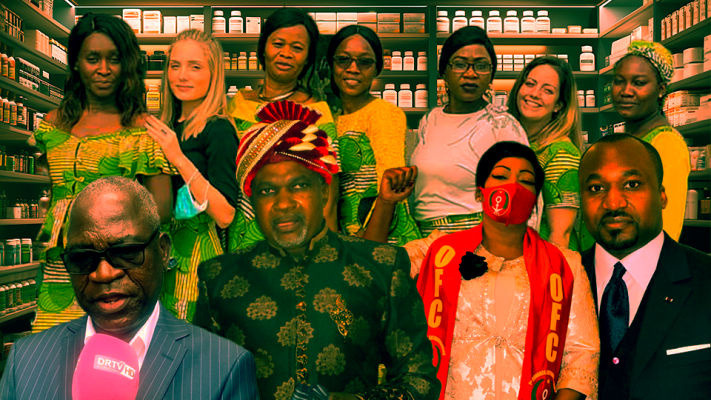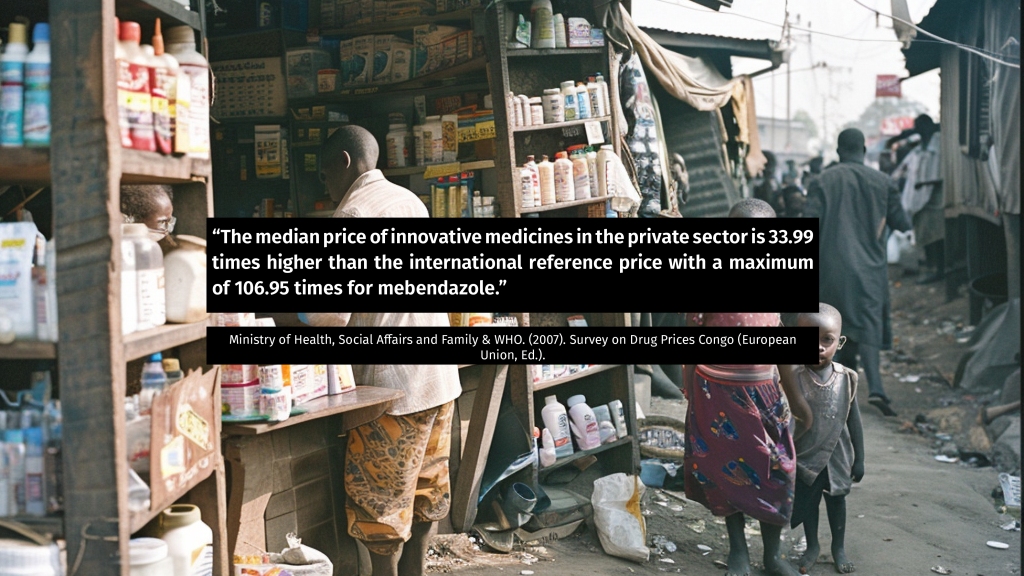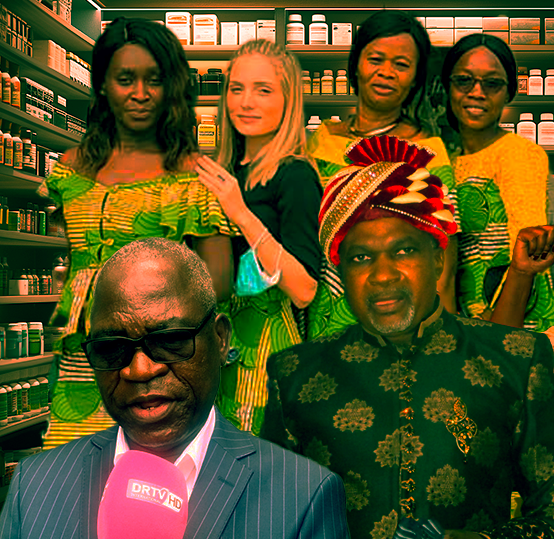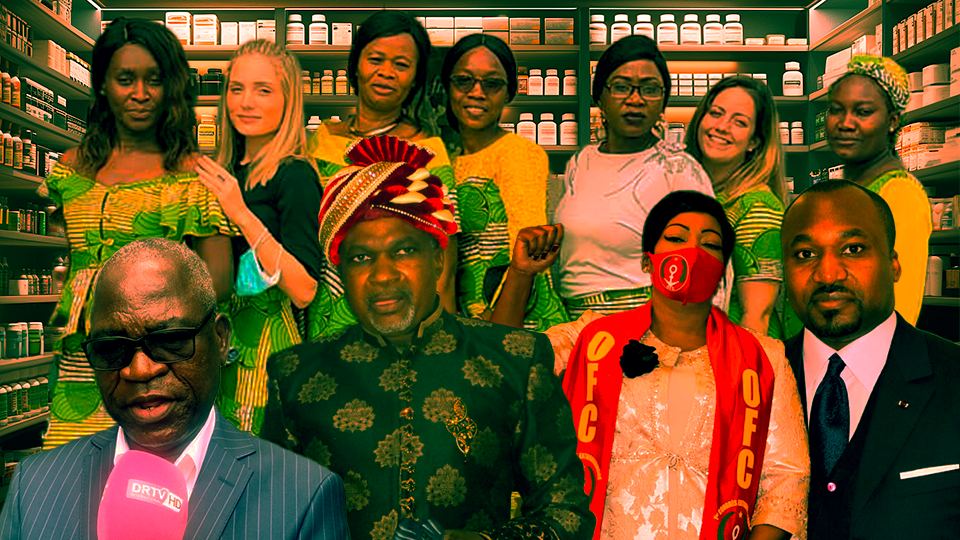A former general manager of a mineral water company, a subsidiary of an Algerian conglomerate, statutes, and a ghost manager: As soon as we approach the Congolese pharmaceutical sector, we are faced with an opacity worthy of the forest virgin.
According to regulations, the private drug distribution network is organized into two levels: wholesale distributors and retailers.

The August 2018 Health Sector Review report lists seven (7) wholesale distributors: SEP (Equatorial Pharmaceutical Company), LABOREX, UBIPHARM-CONGO, PHARMACREDIT, ZENUFA, EDS PHARMA and ROFFE PHARMA. The report does not specify who runs its companies or who owns them.
Even more opaque, they are all absent from the latest national file of Congolese companies. To this list of seven wholesale distributors, we must add at least one company, the Biocare laboratory run by a «ghost,» Jacques Bandelia. This name only appears once in an article in the Brazzaville dispatches—no photo of this leader, no mention in the Official Journal, nothing anywhere.

The Biocare laboratory produces massive solutions, particularly isotonic and saline glucose serums. It is the only company that supplies the country since the closure of LAPHARCO, previously LAPCO (Congo Pharmaceutical Laboratory).
Our investigation also questions the Congolese aspect of the contaminated blood affair, therefore the proliferation of AIDS in the Republic of Congo, and the possible participation of dispatchers in this scandal, as we will see later.

In 2018, base hospitals had 48% availability of medicines. Recurring shortages benefit an informal sector known as street pharmacy. Even the National Blood Transfusion Center is not immune to reagent shortages, which makes controlling and supplying blood products impossible.
According to a technical study by the World Bank on the private pharmaceutical sector, its turnover was more than 42 billion FCFA in 2012.
In this country where parasitosis is endemic and diarrhea is the third cause of infant mortality, the two reference dewormers, Mebendazole and metronidazole, are sold at a price more than 10 times higher than the international reference price.
The 2007 technical report on the price of medicines by the WHO and the Ministry drives home the point. The median price of innovative medicines in the private sector is 33.99 times higher than the international reference price, with a maximum of 106.95 times for Mebendazole.
Our study shows that the medicine market in the Republic of Congo is a monopoly of CFAO through its subsidiaries.
However, it should be noted that there are wholesale distributors not listed in the Ministry’s Health Account reports. These wholesale manufacturers mainly distribute products made in India.
Our investigation could not determine whether he practices legally in the Republic of Congo.
Finally, there is the eternal question of street and counterfeit drugs. In Mouyondzi, local actors told us that all the street drug sellers were untouchable because they were supporters of Lydia Mikolo, the former Minister of Health.
According to the 2022 report from the French Treasury on trade with Congo, «instruments and devices for medicine» represent the second largest item of imports from Congo (6.2%), followed by «medicines» (2.4%). In 2022, imports to Congo amounted to 1,696.9 billion, also increasing (+ 50%), compared to 1,132.9 billion FCFA in 2021.
As the financial data for the entire pharmaceutical sector is not documented, it is impossible to say its turnover in 2024 and even less who benefits from this windfall.
Due to the CFAO monopoly, princeps and generic drugs are expensive in Congo. Prices can be up to five or even nine times the purchase price. In 2007, according to the technical report of the Ministry of Health on the price of medicines, treating a gastric ulcer for one month with ranitidine tablets required 25.1 days of salary for the originator and 6.7 days for the generic equivalent.
Therefore, the Congolese adopted three main strategies: intermittent compliance, recourse to street medicine, and neotraditional/confessional medicine.
- The first strategy involves changing your prescription and not taking the full treatment but only what you can afford.
- The second is to look for equivalents on the street at the risk of ingesting counterfeit and damaged products because they are poorly stored.
- The third involves turning to so-called traditional medicine that is unregulated and where charlatans and evangelical religious people are rampant.
For forty years, sick, the Congolese citizen has been reduced to turning to prayer with the laying on of hands as treatment while waiting for better days.
